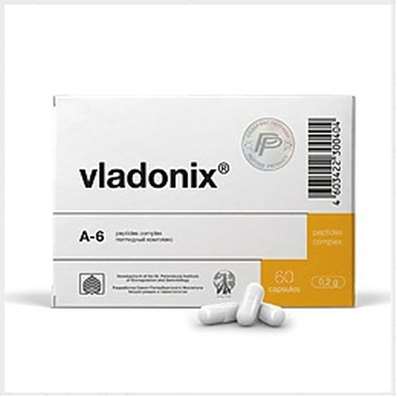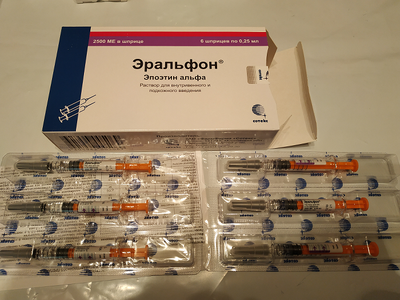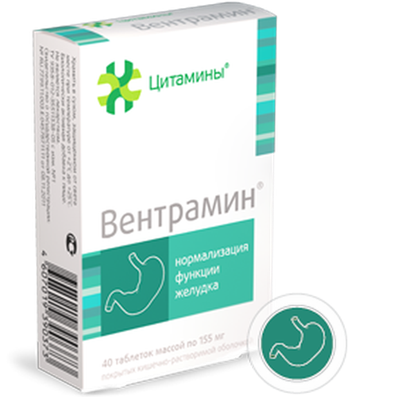Instruction for use: Noophen
I want this, give me price
Trade name of the drug – Noophen
Active substance: Aminophenylbutyric acid (Acidum aminophenylbutyricum)
Dosage Form: capsules
Composition
(per capsule):
active substance:
amino-phenylbutyric acid hydrochloride 250 mg
Excipients: lactose monohydrate - 180 mg; potato starch - 67.5 mg; calcium stearate - 2.5 mg
Capsule: titanium dioxide (E171) - 2%; Gelatin - 100%
Description of Noophen
The drug forms
Capsules: Hard gelatin size ¹0, white containing powder from white to white with a little shade.
Pharmacotherapeutic group:
Anxiolytic (tranquilizer), nootropics
ATX Code
N05BX Anxiolytics other
The nosological classification (ICD-10)
F06.6 Organic emotionally labile [asthenic] disorder:
Asthenic disorders; Asthenic conditions; Asthenic violation; Asthenic disorders; Asthenic conditions; Asthenic phenomenon; Asthenic violation; Asthenic-depressive disorder; Asthenoneurotic state; Asthenic-depressive disorder; Asthenic-depressive state;
Asthenic-hypochondriac phenomena; Asthenoneurotic disorder; Hypochondriacal and asthenic-hypochondriac state; Organic asthenic-depressive disorder; Psycho-asthenic-like disorder.
F10.3 abstinence: Alcohol withdrawal syndrome; abstinence symptom; Abstinence syndrome in alcoholism; abstinence; alcohol abstinence; alcohol withdrawal; Alcohol abstinence; Alcohol withdrawal syndrome; withdrawal disorder; withdrawal state; alcohol withdrawal syndrome; withdrawal syndrome; The syndrome of alcohol abstinence; alcohol withdrawal syndrome; Status of abstinence.
F41.9 Anxiety disorder, unspecified: Severe anxiety; neurosis-like symptoms; neurosis-like disorder; neurosis-like state; Neurosis with anxiety symptoms; Neurosis with anxiety; Neurotic disorders with anxiety syndrome; The acute situational stress and anxiety; The acute situational stress anxiety; Acute anxiety attack; Depressed mood with anxiety elements; Psychopathy with a predominance of anxiety and worry; Sudden anxiety; Situational Anxiety Disorder; An anxiety condition; Soest; Anxious-delirium;
Disturbingly delusional component; anxiety; Anxiety; anxiety disorder; Anxiety disorders; Anxiety disorders in neurotic and neurosis-like states; Anxiety syndrome; Chronic neurotic anxiety; Sense of anxiety.
F48.9 Neurotic disorder, unspecified: Secondary neurotic symptom; Other neurotic state; Neurosis; Neurosis with increased irritability; Neuroses; Neuroses of all kinds; Neuroses with inhibition; neuroses of the heart; Neurotic disorders in alcoholism; Neurotic disorders with inhibition; Neurotic disorders with anxiety syndrome; Neurotic reactions; Neurotic symptoms of alcoholism; Neurotic state; The neurotic syndrome; neurotic disorders; The attack of neurological dysfunction; School neurosis; Emotional stress.
F95.9 Tics unspecified: generalized tics; Coprolalia.
F98.0 Enuresis inorganic nature: Children's enuresis; Urinary incontinence; Urinary incontinence; etiology nonhormonal; Urinary incontinence inorganic etiology; Functional enuresis in children.
F98.5 Stuttering [hesitation]: Stuttering; Stuttering and other speech defects in children; Clonic form of stuttering; logoneurosis.
G47.0 Disorders of falling asleep and maintaining sleep [insomnia]: Insomnia; Insomnia, especially difficulty falling asleep; desynchronosis; Prolonged sleep disturbance; Difficulty falling asleep; Difficulty falling asleep; Difficulty falling asleep; insomnia; Short-term and transient insomnia; Short-term and chronic sleep disorders; Short or shallow sleep; Violation of sleep; Disturbed sleep, especially in the phase of falling asleep; Infringements sleep; sleep disturbances; Neurotic sleep disturbance; Shallow superficial sleep; shallow sleep; Poor quality of sleep; Night awakening; Night waking; Sleep Pathology;
Postsomnic violation; transient insomnia; Trouble falling asleep; Early awakening; Early morning awakening; Early awakening; sleep disorder; somnipathy; persistent insomnia; difficult to fall asleep;
difficulty falling asleep; Difficulty falling asleep in children; persistent insomnia; Worsening sleep; Chronic insomnia; Frequent night and / or early morning awakening; Frequent nocturnal awakening and feeling shallow sleep.
H81.0 Ménière's Disease: Disease / Meniere's syndrome; Labyrinth dropsy; Meniere's disease; Meniere's syndrome; endolymphatic hydrops.
H81.4 Vertigo of central origin: vestibular vertigo; Vertigo labyrinthine origin; Vertigo of vascular origin.
H81.9 Violation of vestibular function, unspecified: vestibular nystagmus; Ischemic disorders of hearing and balance; Cochle-vestibular disorder; Cochle-vestibular syndrome of vascular origin; Labyrinth, vestibular disorders; Labyrinth disorders; Violation of the microcirculation in the maze.
T75.3 Motion sickness when moving: air Sickness; motion Sickness; seasickness; Airsickness; kinetoses; Seasickness; The symptom of motion sickness; motion sickness syndrome; kinesia.
Pharmacological Properties of NoophenPharmachologic effect
Mode of action - nootropic, anxiolytic, psychostimulant.
pharmacodynamics
Aminophenylbutyric acid hydrochloride is a derivative of gamma-aminobutyric acid, and phenylethylamine. It has tranquilizing properties, it stimulates memory and learning ability, increases physical working capacity, eliminates mental and emotional stress, anxiety, fear, and improves sleep. No effect on choline and adrenergic receptors. The drug prolongs the latency period and shortens the duration and severity of nystagmus. Visibly reduces the appearance of fatigue and vasovegetative symptoms, including headache, a feeling of heaviness in the head, sleep disturbances, irritability, emotional lability, increases mental performance, improves mood, increases the interest and initiative, motivation to be active without sedation or excitation.
In contrast, under the influence of tranquilizers drug Noophen improving psychological performance (attention, memory, speed and accuracy of sensory-motor reactions). There was no formation of addiction and dependency to the drug, withdrawal syndrome.
Pharmacokinetics
After oral administration, the drug is well absorbed and penetrates into all tissues of the body. In brain tissue gets around 0,1% γ-amino-β-phenylbutyric acid hydrochloride of the dose of the drug, in patients younger and older age may increase the penetration through the BBB. After 3 hours, γ-amino-β-phenylbutyric acid hydrochloride in urine is detected, at the same time, the concentration in the brain tissue is not reduced, it is still detected in the brain at 6 h. 80-95% of the drug is metabolized in the liver to pharmacologically inactive metabolites. 5% of drugs excreted from the body by the kidneys unchanged. On the next day after the γ-amino-β-phenylbutyric acid hydrochloride can only be detected in the urine; it is determined in the urine even after 2 days after administration, but detectable amount of 5% of the administered dose. Most binding γ-amino-β-phenylbutyric acid hydrochloride in the liver (80%), it is not specific. Repeated use of drugs does not accumulate in the body.
Indications for Noophen
- Asthenic and anxious-neurotic condition;
- Stuttering, tics, and enuresis in children;
- Insomnia, night anxiety in the elderly;
- Meniere's disease, vertigo associated with dysfunction of the vestibular apparatus of various origins;
- Prevention of motion sickness when kinetoses;
- In the complex therapy of alcohol withdrawal syndrome for relief of psychopathological and somatic-vegetative disorders.
Contraindications for Noophen
- Hypersensitivity to the active substance or excipients of the drug;
- acute renal failure;
- pregnancy;
- lactation;
- under the age of 8 years (for a given dosage form);
- a rare congenital galactose intolerance, lactase deficiency or glucose-galactose malabsorption.
Precautions: erosive and ulcerative diseases of the digestive tract (due to the irritating effect of the drug is recommended to prescribe smaller doses).
Pregnancy and breast-feeding
Use during pregnancy and lactation is not recommended as there is not enough clinical observations.
In experimental studies in animals have not found mutagenic, teratogenic and embryotoxic effects of the drug.
Noophen Dosage and Administration
Inside, the food, drinking water, without chewing.
Asthenic and anxious-neurotic state
Adults: 250-500 mg 3 times a day. The highest single dose: adults - 750 mg in patients over 60 years - 500 mg. If necessary, the daily dose was increased to 2.5 grams (2500 mg). The course of treatment - 4-6 weeks.
Stuttering, tics, and enuresis in children: from 8 to 14 years - 250 mg 2-3 times a day; children over 14 years - adult dose.
Insomnia and night anxiety in the elderly: 250-500 mg 3 times a day.
Remedy dizziness dysfunction of the vestibular analyzer:
- Infectious origin (GRT-gene labyrinthitis) and Meniere's disease - during the exacerbation appoint 750 mg 3 times a day for 5-7 days, with a decrease in the severity of vestibular disorders - 250-500 mg 3 times a day for 5 7 days, and then - 250 mg / day for 5 days. At relatively mild disease - 250 mg 2 times a day for 5-7 days, followed by 250 mg / day for 7-10 days;
- Vascular and traumatic genesis - appoint 250 mg 3 times daily for 12 days.
Prevention of motion sickness when kinetoses
250-500 mg once daily for 1 hour before anticipated travel or when the first symptoms of motion sickness. Antiseasick Noophen action of the drug increases with increasing dose. When the express manifestation of motion sickness (including uncontrollable vomiting) receiving the drug inside is ineffective even at a dose of 750-1000 mg.
In the combined therapy of alcohol withdrawal syndrome for relief of psychopathological disorders and somatovegetative.
In the first days of treatment appoint 250-500 mg 3 times a day and 750 mg at bedtime, with a gradual decrease in the daily dose to normal adult.
Take a double dose to replace the missed dose is not allowed.
Patients with kidney and / or liver failure after prolonged use is necessary to monitor renal function and / or liver.
If abnormal liver function, high doses can cause liver toxicity. Patients administered in smaller doses.
Side effect of Noophen
Noophen, like other medicines, can cause side effects, which are manifested not in all patients. Noophen generally is well tolerated.
Classification of adverse reactions for the development of frequency: very common - ≥10%; often - ≥1% but <10%; infrequently - ≥ 0.1% but <1%; rarely - ≥0,01% but <0.1%; very rarely - <0.01%; * - Not known (can not be determined from the available data).
From the nervous system: drowsiness and increased symptoms (early treatment), dizziness, headache.
On the part of the digestive tract: nausea (early treatment).
Skin and subcutaneous tissue disorders: rare - allergic reactions (rash, pruritus).
On the part of the liver and biliary tract: long-term use of high doses - hepatotoxicity.
If any of the above instructions or side effects are compounded by the patient noticed any other side effects not mentioned in the instructions, you should inform your doctor.
Overdose of Noophen
Noophen has low toxicity. Data on cases of overdosage have been reported.
Symptoms: drowsiness, nausea, vomiting, dizziness. With prolonged use of high doses may develop eosinophilia, hypotension, impaired renal activity, fatty liver degeneration (receiving more than 7 grams).
Treatment: symptomatic, gastric lavage as well as, maintaining vital functions. No specific antidote drug.
Interaction
For the purposes of mutual potentiation Noophen can be combined with other psychotropic drugs, reducing the dose of the drug and the combined Noophen.
It extends and enhances the effect of hypnotics, neuroleptics and antiparkinsonian drugs.
SPECIAL INSTRUCTIONS for Noophen
With prolonged use is necessary to control the cellular composition of the blood, liver function.
Effects on ability to drive vehicles or to maintain potentially hazardous machinery. During the period of treatment must be careful when driving and occupation of other potentially hazardous activities that require high concentration and psychomotor speed reactions, as some patients may experience CNS side effects, such as drowsiness and dizziness.
Release Form
Capsules 250 mg. In blisters made of PVC film and aluminum foil for 10 pcs. 2 blisters in a pack made of cardboard.
Storage conditions of Noophen
In a dry, dark place at a temperature no higher than 25 ° C.
Keep out of the reach of children.
Shelf life
2 years.
Do not use beyond the expiration date printed on the package.
Conditions of supply of pharmacies
On prescription.

 Cart
Cart





